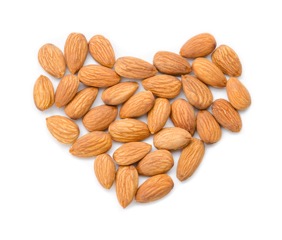Did you ever sit down with a bag of popcorn at the movies only to discover it empty before the feature presentation has even begun? Let’s face it, those previews do last forever, but that’s not really the point is it? Chances are you didn’t even realize that you were eating the popcorn or possibly even remember tasting it. This is an example of mindless eating.
When we eat mindlessly, without paying attention, we tend to eat too much and usually well past the point of satiety. In fact, you may likely feel pretty lousy when you realize what has happened, but by then it’s too late. This is one of the easiest ways to sabotage your weight loss goals and to pack on added and unwanted pounds-possibly without even being conscious of your action. Eating too of a good thing can still be bad for you. It may not even occur to you until the scale screams “OMG”!
Paying attention to what you eat and how much you eat is crucial to any successful weight loss or weight management program. Mindful eating means being aware and conscious of what you are eating, when you are eating it and why you are eating it. Portion control goes hand in hand with mindful eating. Take nuts for example. Both nuts and seeds are an excellent source of protein and are also a perfect way to get your Omega-3 fats along with other essential vitamins and minerals. But, it is so easy to eat too many nuts and seeds. If you think of a portion size serving of nuts as 1 oz., you will have a better idea of how easy it is to overdo it. A portion of nuts does not mean eating handfuls at a time, or even picking at them one by one while sipping a drink or talking on the phone. Instead, according to the Cleveland Clinic, “the following equal a one-ounce serving: 24 almonds, 18 medium cashews, 12 hazelnuts or filberts, 8 medium Brazil nuts, 12 macadamia nuts, 35 peanuts, 15 pecan halves and 14 English walnut halves. All it takes is one, one-ounce serving a day or five ounces per week of a variety of nuts to reap the heart-disease fighting benefits found in the research presented above.”
Making the conscious decision to pre-portion serving sizes of certain foods makes it possible to enjoy them without the danger of adding unnecessary calories to your diet. While I do not advocate counting calories while following a clean, whole food diet, at the same time, certain healthy foods still have a high calorie count. For this reason, it may be necessary to dole out portions to prevent yourself from eating too much. By preparing snacks like nuts into small, single-serving bags can help keep the servings under control.
In order to give my clients a better idea of how to understand portion control without feeling deprived I offer the following suggestions:
- Plan ahead. Knowing what you plan to eat helps you decide in advance how much you need to feel satiated- that is satisfied, not full.
- Track your food. Writing down what you eat and how you feel when you’re eating it is very helpful in keeping you mindful of your behavior.
- Know your triggers. Foods such as nuts and seeds may be good for you, but if you can’t stop eating them perhaps you shouldn’t eat them, or at least eat them in a “safer”, more controlled environment, for instance on the go instead of while watching TV.
- Prepare your own food. When you cook you can control how much you make and therefore how much each serving size will be, including what you will have leftover.
- Slow down and enjoy your food. Chewing and eating slowly allow your body the opportunity to digest the food more thoroughly so that you recognize that you are full. It also ensures that you are aware of that feeling before eating past that point.
When you eat in a more mindful manner, you will find yourself enjoying your food more. You will also appreciate the texture and flavors of your food more. You will also be less likely to feel deprived because while you may enjoy the food you will learn that there is more where that came from, and you don’t have to eat it all at once. Sometimes all you need is a taste to satisfy your taste buds.

